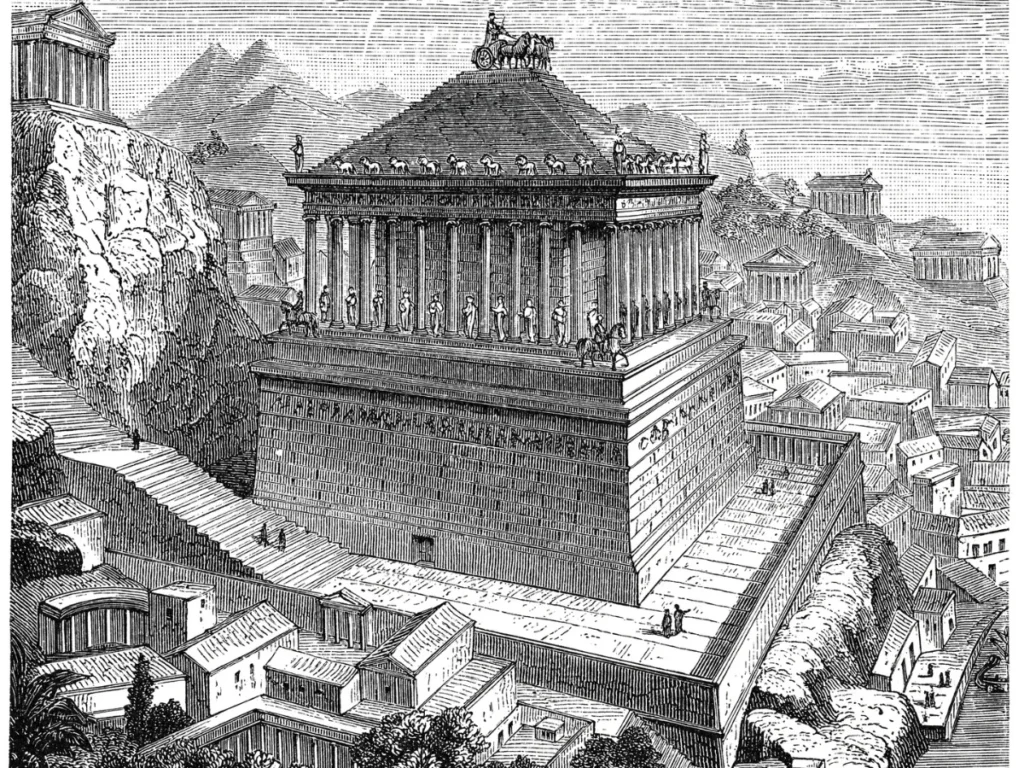The Mausoleum at Halicarnassus
The Mausoleum at Halicarnassus, one of the Seven Wonders of the Ancient World, showcased Greek architectural brilliance and mythological influence. Built as a tomb for Mausolus, it blended Greek and Lycian styles and was adorned with statues of Greek deities, emphasizing their role in the afterlife. This monumental structure reflected Greek beliefs in the gods’ continued influence, serving as both a tribute to the deceased and an exhibition of regional artistry and wealth.

The Mausoleum at Halicarnassus
Mausoleum at Halicarnassus: An Architectural Marvel
The Mausoleum at Halicarnassus, another of the Seven Wonders of the Ancient World, was a testament to the grandeur of Greek architecture and its deep-rooted connection to mythology. Commissioned by Queen Artemisia II of Caria as a tomb for her husband Mausolus, the structure blended Greek and Lycian architectural styles, showcasing intricate friezes and statues of Greek deities, emphasizing their importance in the life beyond.
The Purpose of the Mausoleum
The Mausoleum served a dual purpose – to immortalize Mausolus and to exhibit the region’s wealth and artistic prowess. Its construction, led by renowned architects Satyros and Pythius, began around 353 BCE in Halicarnassus, an ancient city on the southwestern coast of modern-day Turkey.
Greek Architectural Excellence
The Mausoleum was a marvel of Greek engineering and artistry. Rising over 45 meters in height, it featured a stepped pyramid-like structure with an impressive colonnade. Statues adorned its corners, showcasing the Greek pantheon. The remarkable blend of Ionian, Doric, and Lycian styles highlighted the interconnectedness of cultures in the Hellenistic era.
The Role of Greek Deities
Greek gods and goddesses played a pivotal role in the design of the Mausoleum. Statues of Zeus, Apollo, and other deities adorned the monument. This was a reflection of the ancient Greek belief that these gods held influence over human destiny, even in death. It was common for the Greeks to seek the favor of these deities for protection, guidance, and eternal blessings.
Conclusion
The Mausoleum at Halicarnassus stood as a testament to Greek architectural ingenuity and the enduring importance of Greek mythology. Though it fell victim to earthquakes and eventual dismantling by various conquerors, its influence on subsequent architectural endeavors and its enduring legacy in the realm of the Seven Wonders of the Ancient World continue to captivate imaginations today.
